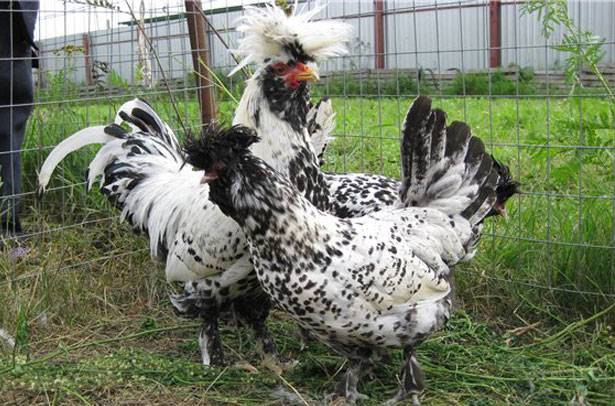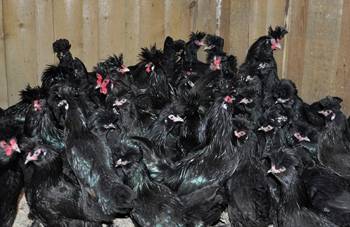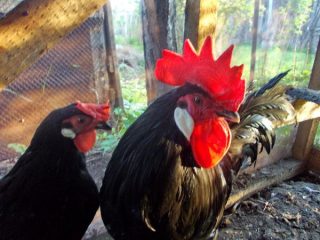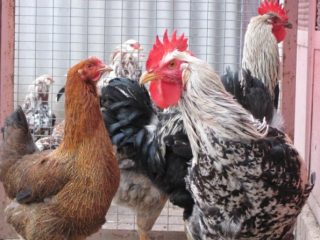Content
There are so many breeds of chickens you won’t find today on farmsteads and garden plots in Russia. Many people raise chickens not only for meat and eggs, but also for decorative purposes, and there are more and more similar breeds. But in the vast expanses of our homeland, it turns out that there is a breed of chickens that is recognized throughout the world as a role model in many respects, but, above all, for its beauty. Moreover, Pavlovsk chickens are recognized as almost the oldest breed of chickens in the history of Russia. They are akin to ancient fossil animals, which anyone interested in paleontology dreams of reviving.
As for the Pavlovsk breed of chickens, it is almost like a bird Phoenix, was revived from complete oblivion in the eighties of the last century through the efforts of several enthusiastic breeders, who also worked in completely different parts of Russia. At this point, we can clearly talk about the complete restoration of this breed, although its fate was very difficult.
History of the breed
Partly due to the antiquity of its origin, partly due to the lack of written evidence, the very history of the appearance of the Pavlovsk chicken breed is still, unfortunately, shrouded in darkness.
It is only known that the first chickens of this breed were bred in the village of Pavlovo, Nizhny Novgorod province, which is where their name actually came from. This village and its inhabitants became famous throughout Russia not only for their chickens. In ancient times it was called Vulcanovo, due to the fact that the main craft that almost every adult man in the village owned was blacksmithing. Probably due to the fact that blacksmithing was highly valued in Rus', the village residents were issued passports by a special decree of Empress Catherine II, with which they could freely move not only throughout Russia, but also beyond its borders and trade their products. Although at the same time serfdom flourished in the rest of Russia, the Pavlovians had the opportunity, when traveling, to bring various wonders from distant lands, and it was not for nothing that they became famous for breeding the unique Pavlovian lemon, which grew and bore fruit in almost every hut.
They were also involved in breeding various breeds of birds: geese, chickens, canaries, etc. The residents of the village of Pavlovo, apparently, were amazingly talented in everything, because they managed to breed, and even keep pure, a breed of chickens with very complex recessive genetics.
Starting from the 19th century, the Pavlovian breed of chickens began to spread throughout many countries of Europe and Asia, where it received due recognition, and only in its homeland was it almost forgotten altogether. Due to the disdainful attitude towards domestic breeds and the preference in those years for everything foreign, the Pavlovsk breed of chickens was placed almost on the brink of extinction. Although then, at the turn of the 19th – 20th centuries, the extinction of the breed was nevertheless prevented.
In 1878, Pavlovsk chickens were presented in Moscow at an international exhibition, and in 1899 they received the status of a national breed. But then the revolution of 1917 occurred, the Civil War and the subsequent years of dispossession, when many breeds of poultry and animals were lost or mixed with each other.
And only at the end of the last century it was literally possible to restore the Pavlovian breed in the form in which it existed at the beginning of the 20th century.
Description of the breed
Pavlovsk chickens, the breed description of which follows below, are a small, strongly built, bearded-crested bird with legs covered with dense feathers.
- The live weight of a rooster of this breed is about 1.5-2.2 kg, respectively, a chicken weighs about 1.3-1.5 kg;
- The head is round, medium in size. The beak is almost straight, its color depends on the color of the plumage, thin;
- The eyes are quite large, round, dark;
- The crest is one of the main characteristics of the breed. There are three varieties, but the third is usually discarded. Ideally, the crest should have a round or oval base and grow upward in the form of a sheaf, and then fall apart in all directions like a kind of fountain. There are also helmet-shaped crests, narrower in shape, compressed on the sides and slightly inclined forward. At the same time, they do not fall apart and do not interfere with the birds’ vision. The third type of crest, when it falls apart greatly and interferes with vision, is considered a defect in the breed;
- The comb is very small, reminiscent of horns. The earrings are very small, difficult to distinguish due to the feathers of the beard. The beard and sideburns are well developed, thick, and cover most of the face and throat. The face itself is red;
- The neck is not long and also covered with thick feathers.The wings are wide, medium-sized, usually tightly pressed. The tail is full, beautifully flowing at a right angle to the back;
- The lower leg is also densely feathered; a distinctive feature on it is the so-called hawk's tuft. In birds, the feathers in the area of the knee joint are arranged in a spoon-shaped fan, so when a chicken squats, a kind of feather litter is formed under its feet, thanks to which it can even sleep in the snow;
- The metatarsus (the so-called lower parts of the legs, bare in ordinary chickens) are blue or gray in color, densely feathered, while the feathers are pressed to the metatarsus, and do not stick out to the side, as in other hairy-legged breeds of chickens;
- There must be four toes, all of them must have feathering, at least a quarter of the length.
The appearance of a chicken and a Pavlovian rooster is quite similar, except that in roosters the tail is much more pronounced and spreads widely. The chicken actually has no earrings. But, oddly enough, the crest, sideburns and beard of chickens are usually more developed than those of a rooster.
Many beginners who are just starting to breed the Pavlovian breed are interested in what age and how they can distinguish hens from roosters. In this regard, the breed is quite difficult; it is unlikely that it will be possible to determine the sex before two months. Birds know how to camouflage themselves well, but some signs can still be noted.
- In hens, the crest looks more like a round cap, while in cockerels, the crest is more elongated in length in the shape of a miniature mohawk;
- If you look at the chicks as a whole from above, then the Pavlovian breed of cockerels have a slightly larger and brighter pattern on the wings and back;
- Hens fledge faster and more evenly than cockerels, which take longer to grow and may have large, easily visible bare areas on their bodies;
- The legs of cockerels are usually larger and longer than those of hens;
- Well, we can’t help but mention the often used “folk way” of determining the sex of any chicken - carefully lift it into the air by one leg upside down. In this case, the hen will press her head up, towards her chest, and the cockerel will rather stretch her head down and to the sides, as if assessing the situation.
The gross disadvantages of the Pavlovian breed, when birds are usually rejected, include the following signs:
- a complete absence of a crest or a crest spread out in different directions that interferes with vision;
- legs without feathers;
- no beard;
- the presence of a fifth finger or cerebral hernia.
Characteristics of the Pavlovsk breed of chickens with photos
The breed is considered an ornamental egg breed, because despite its unearthly beauty, a Pavlovian chicken breed is capable of laying from 150 to 170 eggs per year. She begins to lay eggs on average at the age of about one year. The eggs are white and sometimes creamy in color; the mass of the eggs is quite large for such small birds - 50-65 grams. The flavor profile of the eggs is excellent, with the yolk making up the majority of the egg.
Roosters of the Pavlovian breed grow quite quickly and by six months reach a weight of 1200 to 1500 grams.
Laying hens have a well-developed brooding instinct and are very caring mothers who touchingly raise and raise their chicks.Hatchability is about 90%, and chick survival rate is even higher - about 95%.
In general, birds of this breed are very affectionate towards people, they are happy to make contact and communicate, although they have a rather restless and active character.
The endurance of these birds is also a miracle. In frosty temperatures of -36°C they do not hide in chicken coop, but prefer to voluntarily spend the night on tree branches and on fences. Thanks to their abundant feather cover, they do not freeze at all.
Finally, the color variations of the Pavlovian breed are quite varied. Breeders have golden, silver, smoky, black, white, porcelain, salmon and yellow variations of birds.
Golden
Pavlovsk golden is one of the most popular and widespread varieties of Pavlovsk chicken breed at the moment. This is one of those colors, stuffed animals of which have been preserved to this day, and according to them, appropriate specimens were once selected for breeding the breed. The photo below shows preserved stuffed roosters and hens of the Pavlovian breed, and against their background is a living modern rooster.
The general main color of the plumage is golden. At the tip of almost every feather there is a black spot of a fairly regular shape. On some parts of the body, the spots take on the rather distinct appearance of the Latin letter V. The crest and sideburns with a beard can be either black or variegated. However, it is difficult to convey in words all the colorfulness of this plumage, for which the birds were popularly called “gold”.
Silver
The Pavlovsk silver breed is the second most common breed, and it is this color that was also found among old pictures illustrating representatives of the Pavlovsk breed of chickens.
Chickens and roosters of this variety have a predominant white or silver base color of plumage. And just like golden chickens, black spots of different sizes and shapes and quite regular appearance are scattered all over it.
Other varieties
It is known that the Pavlovian breed had other color varieties, but they are much less common and are often rejected for non-compliance with one or another requirement of the breed standard. Nevertheless, white Pavlovian chickens are quite common - the color of their plumage, in accordance with the name, is snow-white.
Sometimes there are so-called porcelain Pavlovian chickens, the color of whose plumage is so variegated that it is difficult to give preference to any one color. Take a better look at the photos of these beauties and judge for yourself what they look like.
Quite interesting are yellow Pavlovian chickens, the color of which can be called more likely red or fawn.
Well, and finally, there are black Pavlovian chickens, which to a large extent resemble their close relatives - the Siberian moths.
Keeping chickens
It is not for nothing that the Pavlovsk breed of chickens is very popular, because in addition to their high decorative properties and fairly high egg production rates for an ornamental breed, these birds are very unpretentious to their living conditions. What they really need is a lot of space to move around, as these chickens are incredibly energetic. Therefore, it is better not to keep them in cages.The most important thing is to provide them with free range in a sufficiently large area, since the lack of walks in the fresh air can adversely affect the health of Pavlovian chickens.
Roosters of the Pavlovian breed behave quite calmly if they live in a large area, but in cramped conditions they need to be separated, since they themselves may not share the living space.
Pavlovian chickens are unpretentious when it comes to food and in the summer they can practically provide themselves with food. In winter, of course, they require the usual nutritious diet with vitamin and mineral supplements. Be sure to have chalk, shell rock and sand, in which chickens love to swim.
As you can see, keeping and breeding the Pavlovsk breed of chickens is not very difficult, but if you wish, you can not only join in increasing the national heritage that this breed of chickens is, but also get the pleasure of admiring them, as well as an additional tasty and healthy addition to the table in the form of meat and eggs.


























